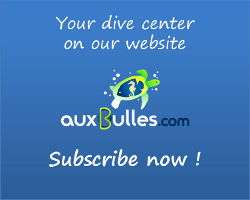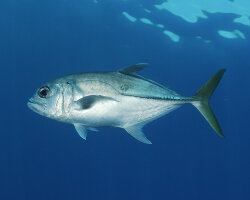Sealife guideThe great barracudaSphyraena barracuda
Taxonomy
- Common name: Great barracuda
- French name: Grand barracuda
- Spanish name: Picuda barracuda
- Scientific name: Sphyraena barracuda (Edwards, 1771)
- Family name: Sphyraenidae
- Order name: Perciformes
- Class name: Actinopterygii
Description
The great barracuda is a large fish, typically measuring around 3 to 6.5 feet in length, with an average weight of 66 to 88 pounds. The largest specimens can reach a maximum length of 10 feet.
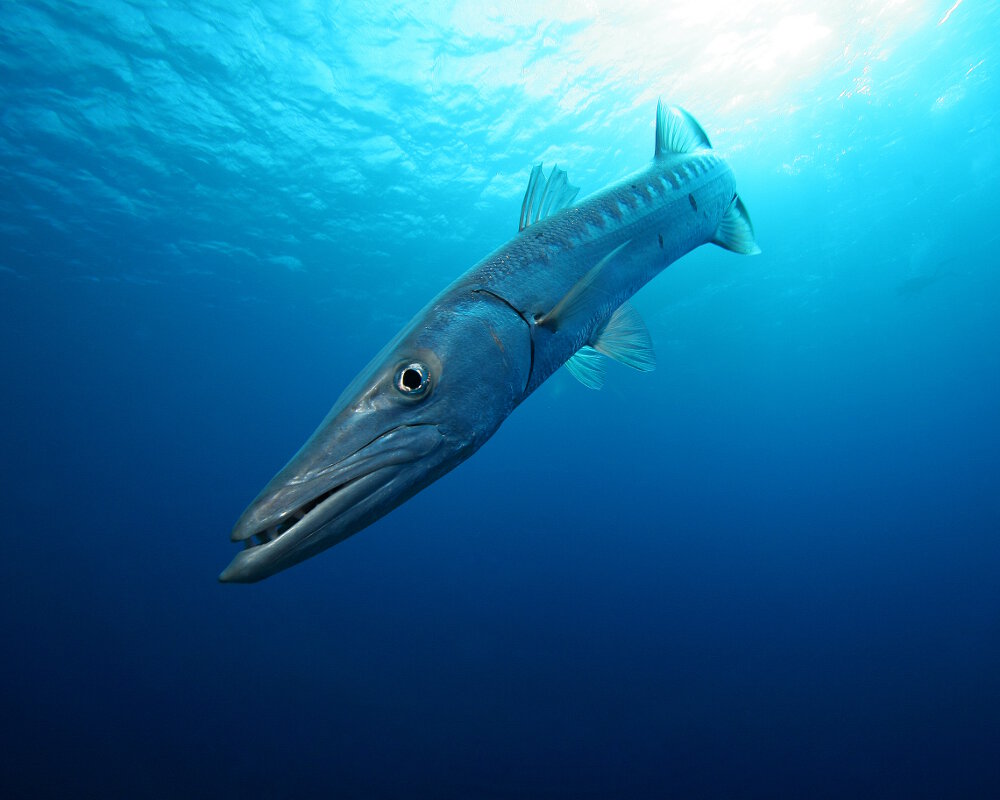
The great barracuda is a fish with an elongated, cylindrical body, a pointed head, and an extended lower jaw ©
Richard Brooks |
Dreamstime.comThe great barracuda has an elongated, streamlined body. Its head is pointed with a prominent lower jaw, featuring sharp teeth and large, visible eyes that contribute to its intimidating appearance.
The great barracuda is silver in color with a series of short black vertical stripes along the upper part of its body. The ventral side of its body is lighter.
The great barracuda's caudal fin is V-shaped. It has two dorsal fins, with the second being almost symmetrical to the anal fin.
Range
The great barracuda is found in the warm tropical and subtropical waters of the world’s seas and oceans.
Habitat
The great barracuda is a solitary pelagic fish that lives near coral reefs. It is most commonly found at depths ranging from 33 to 82 feet.
Diet
The great barracuda is a formidable predator with few enemies besides sharks. It is a carnivorous fish that feeds on smaller fish, octopuses, cuttlefish, and crustaceans. The great barracuda is a solitary hunter that patrols open waters in search of prey.
Reproduction
The great barracuda is oviparous, with females laying eggs in open water, where they are then fertilized by males. After hatching in seawater, the larvae develop within the plankton. Juveniles group together in schools until they reach adulthood, when they become solitary to avoid intense competition among themselves.
Did you know ?
Among all barracuda species, the great barracuda, with its impressive size and intimidating appearance, is largely responsible for the barracuda's fearsome reputation. The thought of encountering a barracuda underwater can cause a moment of apprehension or a quickened heartbeat for any diver !
The great barracuda is listed as many other marine species within The
IUCN Red List of threatened species. The great barracuda appears in the
IUCN Red List since 2015 within the category Least Concern !
Tips for observing
During your dives, be sure to look up towards the surface; you might spot a solitary great barracuda lurking in the water column above, waiting for prey.
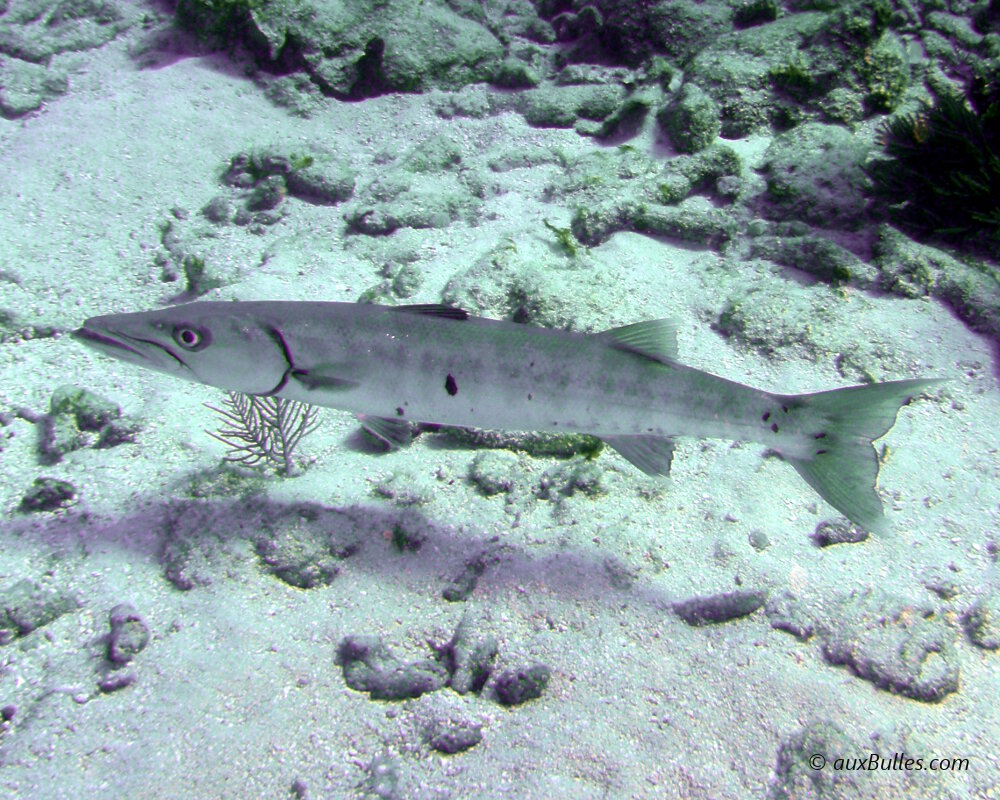
The great barracuda is a solitary hunter that patrols the reef waiting for prey
Otherwise, abrupt and repeated changes in direction by schools of small fish around you are a sign of nearby predators, possibly barracudas.
So keep your eyes open !
Within the same genus
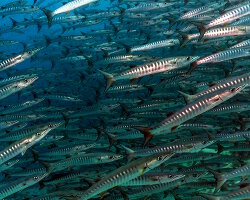
Blackfin barracuda
(Sphyraena qenie)
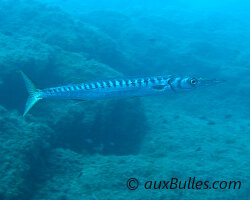
Yellowmouth barracuda
(Sphyraena viridensis)
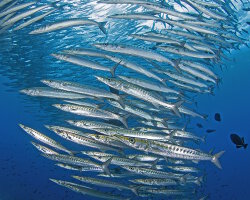
Mexican barracuda
(Sphyraena ensis)
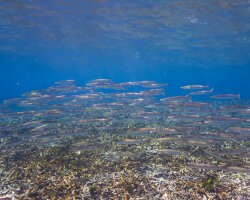
Obtuse barracuda
(Sphyraena obtusata)
Explore also

Aron's blenny
(Ecsenius aroni)
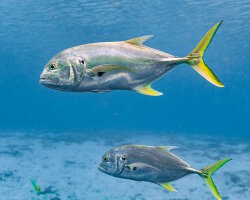
Crevalle jack
(Caranx hippos)

Porkfish
(Anisotremus virginicus)
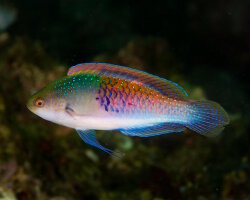
Bluescaled wrasse
(Cirrhilabrus cyanopleura)
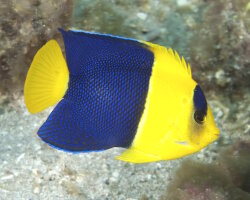
Bicolor angelfish
(Centropyge bicolor)
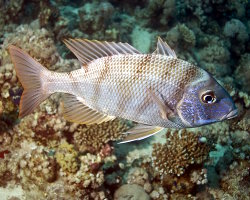
Spangled emperor
(Lethrinus nebulosus)
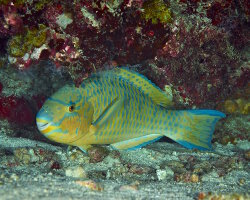
Blue-barred parrotfish
(Scarus ghobban)
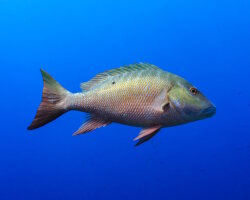
Mutton snapper
(Lutjanus analis)
The marine species from Caribbean sea
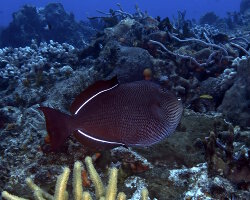
Black triggerfish
(Melichthys niger)
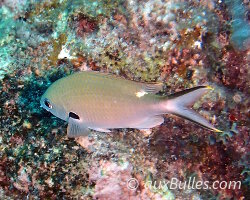
Brown chromis
(Chromis multilineata)

French angelfish
(Pomacanthus paru)

Leatherback sea turtle
(Dermochelys coriacea)
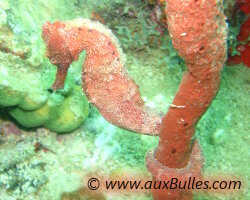
Longsnout seahorse
(Hippocampus reidi)
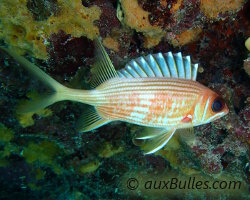
Longspine squirrelfish
(Holocentrus rufus)
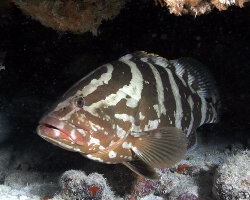
Nassau grouper
(Epinephelus striatus)

Schoolmaster snapper
(Lutjanus apodus)
Dive centers
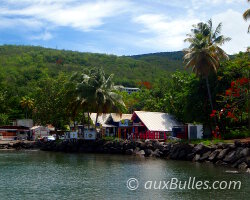
'Les Ilets' dive center

Noa dive center

























